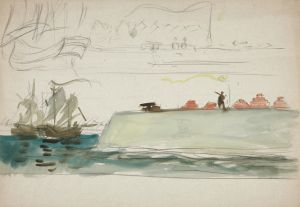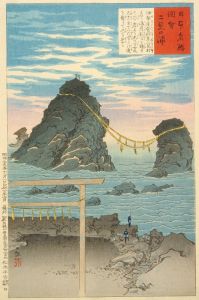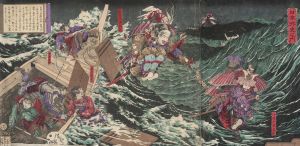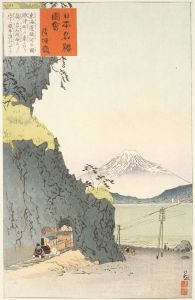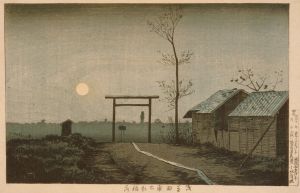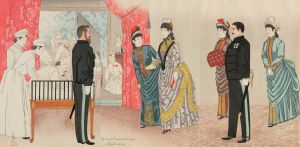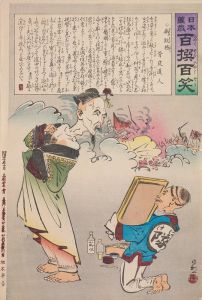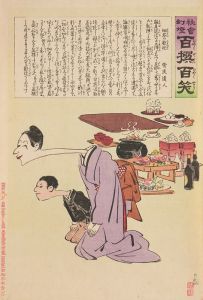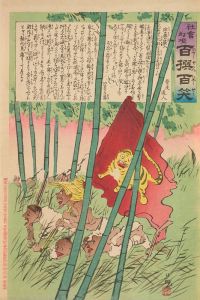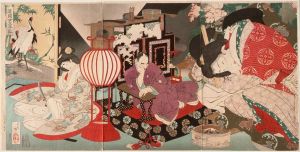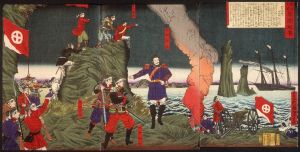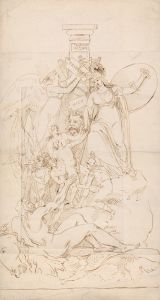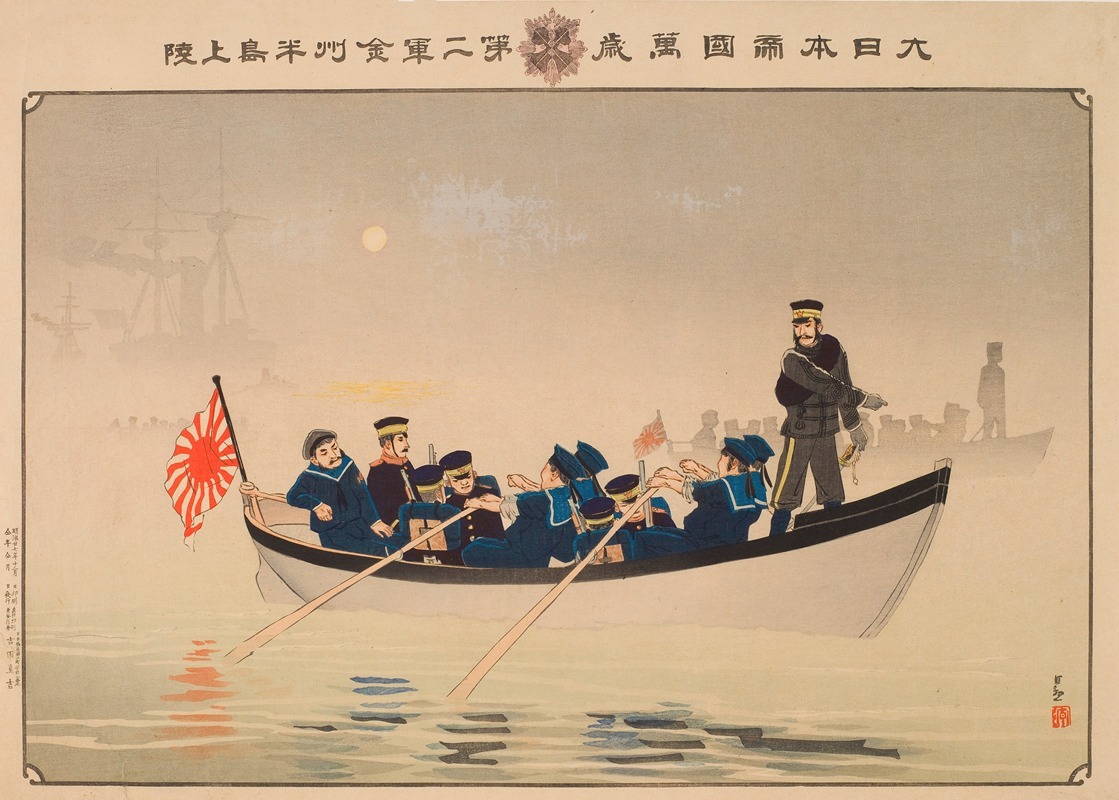
Hurrah for the Great Empire of Japan; The Second Army Lands on the Jinzhou Peninsula
A hand-painted replica of Kobayashi Kiyochika’s masterpiece Hurrah for the Great Empire of Japan; The Second Army Lands on the Jinzhou Peninsula, meticulously crafted by professional artists to capture the true essence of the original. Each piece is created with museum-quality canvas and rare mineral pigments, carefully painted by experienced artists with delicate brushstrokes and rich, layered colors to perfectly recreate the texture of the original artwork. Unlike machine-printed reproductions, this hand-painted version brings the painting to life, infused with the artist’s emotions and skill in every stroke. Whether for personal collection or home decoration, it instantly elevates the artistic atmosphere of any space.
"Hurrah for the Great Empire of Japan; The Second Army Lands on the Jinzhou Peninsula" is a woodblock print created by the Japanese artist Kobayashi Kiyochika during the First Sino-Japanese War (1894–1895). Kobayashi Kiyochika, known for his innovative approach to ukiyo-e and his depictions of modernity in Japan, produced a series of works that documented and celebrated Japan's military campaigns during this conflict.
This particular print illustrates the landing of the Japanese Second Army on the Jinzhou Peninsula, a strategic location in the Liaodong Peninsula of northeastern China. The event depicted in the artwork is part of Japan's broader military operations during the war, which aimed to secure dominance in East Asia and challenge Qing China's influence in the region. The First Sino-Japanese War marked a significant turning point in East Asian history, as it demonstrated Japan's emergence as a modernized military power.
The composition of the print reflects Kiyochika's ability to blend traditional ukiyo-e techniques with modern themes. The scene is dynamic, showing Japanese soldiers disembarking from ships and advancing onto the peninsula. The use of bold colors and dramatic lighting emphasizes the energy and determination of the troops, while the detailed rendering of the ships and uniforms highlights the modernization of Japan's military forces. Such imagery was intended to inspire patriotism and support for the war effort among the Japanese public.
Kiyochika's war prints, including this one, were part of a larger trend of "senso-e" (war pictures) that became popular during the First Sino-Japanese War. These prints served both as propaganda tools and as a means of documenting contemporary events for a domestic audience. They often glorified Japan's military achievements and portrayed its soldiers as heroic and disciplined.
While the exact date of creation for this specific print is not mentioned, it is known that Kiyochika produced many works during the war, which lasted from 1894 to 1895. His prints remain valuable historical artifacts, providing insight into the visual culture and nationalistic sentiments of Meiji-era Japan.





